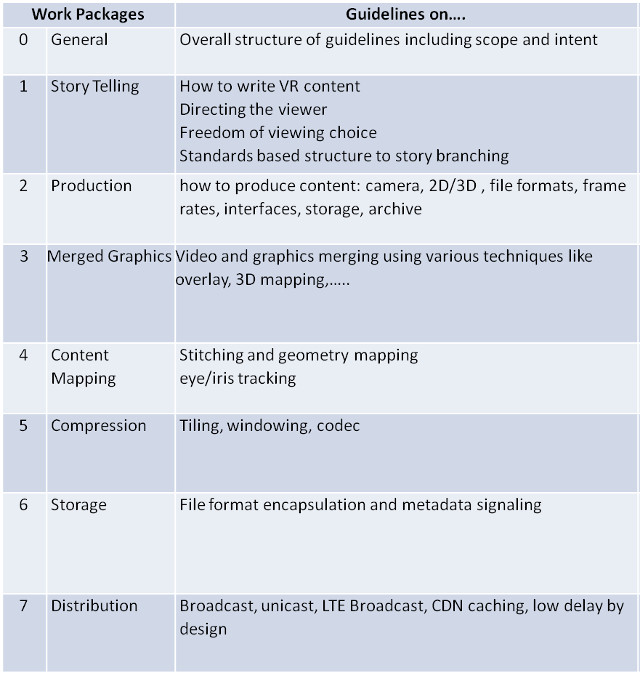The Virtual Reality Industry Forum (VRIF) is a non-for-profit organization whose mission statement is “to further the widespread availability of high quality audiovisual VR experiences for the benefit of consumers.” At NAB, the organization had a public meeting to explain the status of its various working groups and to bring together a number of exhibits and demos from its member companies.
The goals of the organization are lofty and resemble those put forth by the author as the co-founder of the 3D @ Home consortium in 2009. The VRIF now has 35 members representing many elements of this VR ecosystem.

VRIF is not a standards body, but works with these standards bodies to help create and adopt interoperable standards by building industry consensus and documentation to facilitate the standards process. It will also promote VR services and applications.
The VRIF will focus on 2D or 3D 360º video with three degrees of freedom (DOF). More complex VR with six degrees of freedom, like an externally motion-tracked Vive, may be addressed later.
One of the important goals of the group is to publish VR guidelines by the end of the year, with a draft ready by IBC this September. This includes three areas:
- Interoperable distribution based upon MPEG’s Omnidirectional Media Format (OMAF)
- Security guides for 360VR
- Production guidelines
Today, VR experiences must be rendered for each platform, which have a wide range in visual and audio performance. Interactivity also varies widely in terms of accessories, semantics and drivers. This makes interoperability between platforms nearly impossible today.
As a precursor to the guidelines development, a requirements working group has been formed that will evaluate use cases, start looking at human factors issues and add a lexicon of terminology to facilitate communication.
Sky Helps with Production Guidelines
The production guidelines group is being helped by Sky in a big way. During the 3D TV craze, Sky developed sophisticated guidelines for creation of 3D content to help ensure high quality. All of these tips will apply to the capture of 3D VR content as well. As a result, Sky has modified this document for 360VR and is working to improve it as a draft acquisition document as part of the production guidelines. The draft document includes tips on setting parallax, camera-to subject distance, field of view, camera orientation and movement, etc. There are also guidelines for post production, spatial audio, mastering formats and more. Other parts of this working group will look at distribution (compression, storage and delivery) and playback of the VR content. The focus is on OTT delivery via streaming or download, not packaged media.
For interoperability, the group used NAB to issue a call for content. The group wants 4Kx2K or higher resolution 3DOF 360º content with a form of spatial audio which can be used for testing and documentation purposes. This is to help the MPEG OMAF activity.
The security task force wants to avoid reinventing the wheel and will reuse and/or modified as many existing components for encryption and watermarking as possible. Protecting the user’s data, which can include biometrics as well, is a big concern.
The group then provided a list of demonstrations by member companies at NAB. This included B<>com, Ericsson, Fraunhofer HHI, Harmonic, Intel, Ittiam, NGCodec, Orah, Qualcomm, Technicolor, TNO and Verizon. We will report separately in these demos as we are able. – CC

